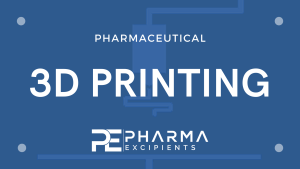3D Printing Methods for Pharmaceutical Manufacturing: Opportunities and Challenges: A Review

Abstract:
3D printing, or additive manufacturing, has gained considerable interest due to its versatility regarding design as well as in the large choice of materials. It is a powerful tool in the field of personalized pharmaceutical treatment, particularly crucial for pediatric and geriatric patients. Polysaccharides are bundant and inexpensive natural polymers that are already widely used in the food industry and as excipients in pharmaceutical and cosmetic formulations. Due to their intrinsic properties, such as biocompatibility, biodegradability, non-immunogenicity, etc., polysaccharides are largely investigated as matrices for drug delivery. Although an increasing number of interesting reviews on additive manufacturing and drug delivery are being published, there is a gap concerning the printing of polysaccharides. In this article, we will review recent advances in the 3D printing of polysaccharides focused on drug delivery applications[6].
Background:
3D printing (3DP) is an emerging technique for fabrication of a variety of structures and complex geometries using 3D model data.Newmethods of 3D printing such as powder bed fusion, fused deposition modeling (FDM), inkjet printing, and contour crafting (CC). Being advantageous in terms of less waste, freedom of design and automation, 3DP has been evolved to minimize incurred cost for bulk production of customized products at the industrial outset. Due to these reasons, 3DP technology has acquired a significant position in pharmaceutical industries. Numerous polymers have been explored for manufacturing of 3DP based drug delivery systems for patient-customized medication with miniaturized dosage forms[4].
Conclusion:
Despite several advantages of 3DP in drug delivery, there are still a few issues that need to be addressed such as lower mechanical properties and anisotropic behavior, which are obstacles to scale up the technology. Polymers as a building material certainly plays crucial role in the final property of the dosage form. It is an effort to bring an assemblage of critical aspects for scientists engaged in 3DP technology to create flexible, complex and personalized dosage forms[3].
Download the full article as PDF here: 3D Printing Methods for Pharmaceutical Manufacturing – Opportunities and Challenges – A Review
Shreya Shrishail Pattanshetti, Anuya Vimlakar Babar, Madhuri Bhushan Patil, 3D Printing Methods for Pharmaceutical Manufacturing: Opportunities and Challenges: A Review, BioGecko, Vol 12 Issue 02 2023, ISSN: 2230-5807
Read more on “Overview of Pharmaceutical 3D printing” here:


